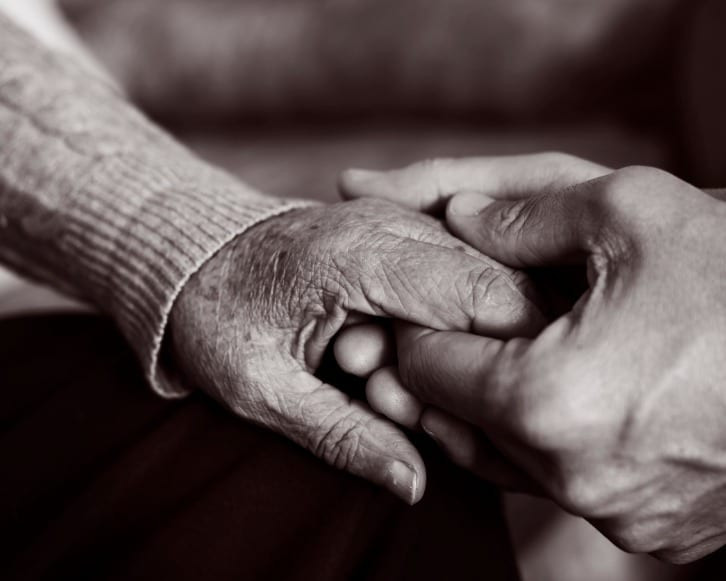Restoring Hope to Elders Struggling with Suicide
By: Patricia Rodgers, Program Officer, Northern Virginia Health FoundationWhen nearly 200 people showed up at a recent workshop in Northern Virginia on preventing elderly suicide, I was surprised. Most of us tend to associate suicide with teenagers and young adults—not grandparents and 80-year-old neighbors.
In fact, local caregivers asked for this training. That’s why the Suicide Prevention Alliance of Northern Virginia (SPAN), a regional collaboration of public and private organizations committed to raising awareness of suicide and the resources available to prevent it, organized the event. Sponsored by the Northern Virginia Health Foundation and the Inova Fairfax Trauma Center, the workshop included presentations on suicide trends in the United States, as well as strategies and tools for assessing and responding to older adults thinking about suicide. As more people recognize that depression and suicide are not a normal part of aging, professionals who work with older adults want to increase their knowledge and proficiency in this area, and with good reason. Suicide is a serious public health problem and the 10th leading cause of death in the United States.
Here in Virginia, people 65 and older are about 35 percent more likely to commit suicide than people ages 15 to 24. Virginians 85 or older are at the highest risk.
At the workshop, Richard McKeon, PhD, MPH, who leads the Suicide Prevention Branch of the Substance Abuse and Mental Health Services Administration (SAMHSA), presented the latest data on the country’s growing suicide rate—a phenomenon unique to the US, and one of the few causes of death trending upward rather than down.
Concerns That Elder Suicide May Increase
According to the federal Centers for Disease Control and Prevention, people 50 and over accounted for nearly half the nation’s 44,965 suicide deaths in 2016. The suicide rate for older Americans (65 and over), however, has been steadily decreasing. Nevertheless, we need to be concerned about a “silver tsunami,” for several reasons.
First, with suicide rates among people in mid-life rising, the same trend may play out even more dramatically with later-life suicides. Second, older adults who attempt suicide are far more likely than younger people to succeed. Older adults are often frail, more isolated and they plan more. And, finally, older adults are the fastest-growing segment of our population.
As a society, all of us—whether we’re health professionals, volunteers at a local senior center, children of elderly parents, or next-door neighbors of an older person living alone—must get better at recognizing and paying attention to signs of suicidal thought and behavior. A variety of resources, from local in-person trainings to toolkits, are available to professionals and non-professionals alike.
Older people who are contemplating suicide frequently don’t seek help themselves because of the stigma associated with suicide. They may not want family members to know how bad they feel or they may see themselves as weak for thinking about suicide. Many of the day’s speakers emphasized that it is all right to ask people how they feel about their lives, and whether they are depressed or thinking of suicide.
Helping Elders from Different Cultures
Cultural differences present other challenges, and it is important for caregivers to recognize the cultural viewpoints they and their clients bring to any discussion about depression and suicide. When the older person in question is new to the country, doesn’t speak English, or follows other cultural norms, he may be more isolated and less willing to seek help. Some elderly immigrants may be starting life all over again, without their families nearby to support them. Others experience discrimination and marginalization.
On the intervention side, we need to do a better job of following up with and coordinating care for elderly people who have been discharged from the hospital after being admitted through the ER for attempted suicide. These patients are at high risk for attempting suicide again in the days immediately following discharge, and they need to be monitored and supported. However, that frequently doesn’t happen.
September is Older Virginians Mental Health Month. As we mark this month, it is important to remember that depression is not a normal part of aging. All of us, from primary care physicians to senior center staff to caring family members and neighbors, should be alert to signs of suicidal thoughts among the older adults we know. SPAN maintains a list of local resources where people can get help. The organization’s website also provides information about suicide prevention, including links to trainings, toolkits, and articles on this important subject.
You can get mental health and crisis intervention services through community services boards, through Crisis Link, and through SPAN, whose motto is “Reach Out. Find Hope.” In an immediate or life-threatening situation, call 911. Northern Virginia jurisdiction-specific resources are available 24/7 and can be accessed at www.suicidepreventionnva.org.

